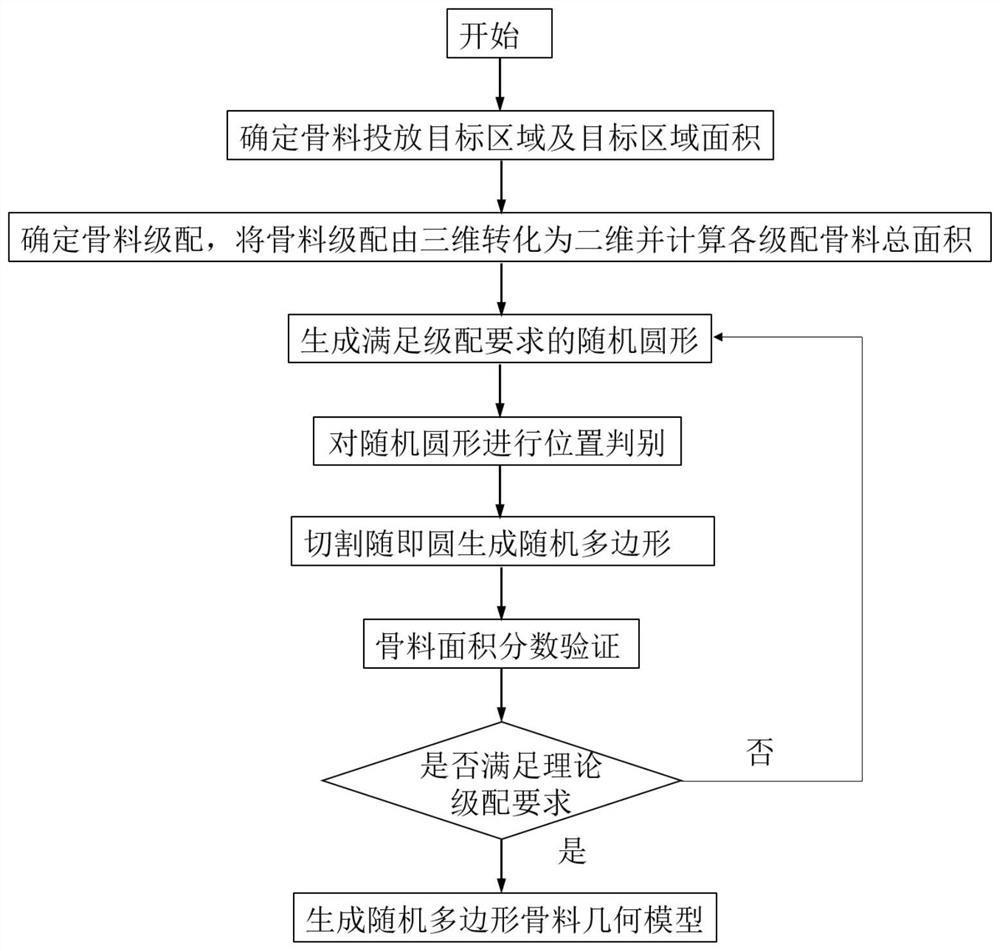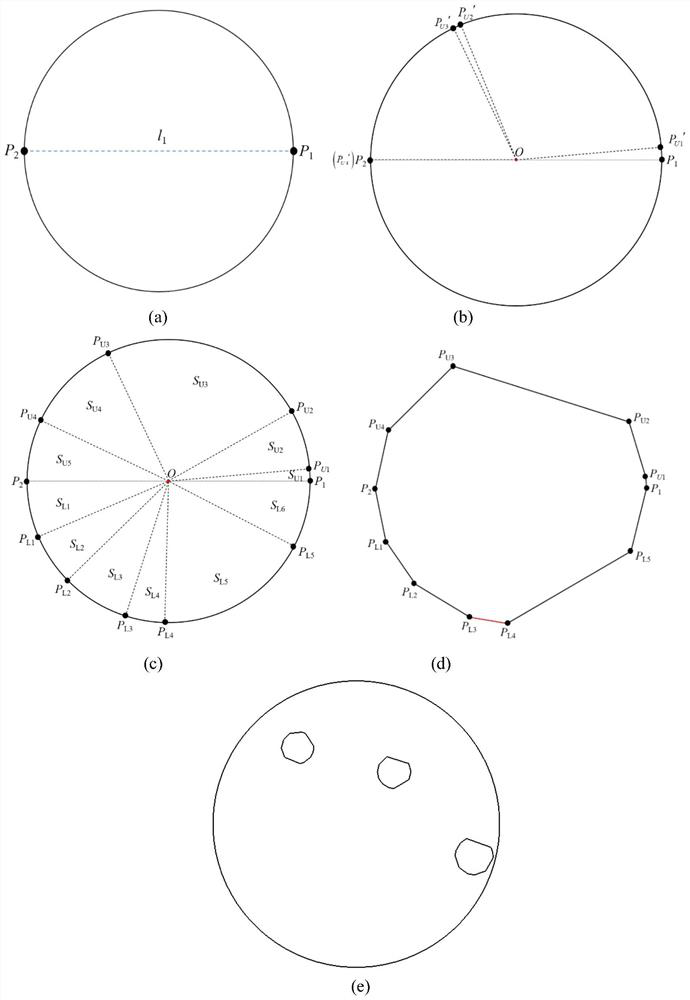A stochastic generation method for graded distribution of two-dimensional concrete aggregates
A technology for random generation of concrete aggregates, applied in geometric CAD, climate sustainability, design optimization/simulation, etc., can solve the problem of not being able to generate concrete aggregates gradually, and achieve strong use value, simple software, and easy operation. convenient effects
- Summary
- Abstract
- Description
- Claims
- Application Information
AI Technical Summary
Problems solved by technology
Method used
Image
Examples
Embodiment 1
[0031] Example 1 is a random aggregate geometric model of concrete Brazilian discs
[0032] Step 1. Determine the two-dimensional target area for aggregate delivery and the area of the target area
[0033] In this embodiment, the target delivery area is a circle, the radius R is 75mm, and the area of the target area is 17671.46mm 2 .
[0034] Step 2: Determine the three-dimensional gradation of aggregates, and calculate the probability of different graded aggregates appearing in the two-dimensional delivery target area according to the Lavalvin formula, as the two-dimensional gradation of aggregates, combined with the delivery target determined in step 1. The total area of the area is calculated, and the theoretical value of the aggregate area at all levels is calculated.
[0035] In this example, only three gradations of aggregates with a particle size of 5mm to 10mm, 10mm to 16mm, and 16mm to 20mm are used to construct polygons. Aggregates with a particle size of les...
Embodiment 2
[0062] Example 2 is a two-dimensional random aggregate geometry model for the mesoscopic simulation of concrete uniaxial compression. The aggregate delivery area is a square of 100mm×100mm, and the aggregate is delivered in a single-grade distribution, and the coarse aggregate particle size is 5-10mm. The final two-dimensional random aggregate geometric model obtained by the present invention is as follows: Figure 4 shown. The area fractions of aggregates were 16.9%, respectively, and the theoretical calculation results were 16.6%, respectively. The errors are 0.3% respectively.
[0063] The invention can set any gradation according to the requirements, and generate the required concrete aggregate geometric model according to the theoretical content of the aggregates at all levels.
PUM
 Login to View More
Login to View More Abstract
Description
Claims
Application Information
 Login to View More
Login to View More - R&D
- Intellectual Property
- Life Sciences
- Materials
- Tech Scout
- Unparalleled Data Quality
- Higher Quality Content
- 60% Fewer Hallucinations
Browse by: Latest US Patents, China's latest patents, Technical Efficacy Thesaurus, Application Domain, Technology Topic, Popular Technical Reports.
© 2025 PatSnap. All rights reserved.Legal|Privacy policy|Modern Slavery Act Transparency Statement|Sitemap|About US| Contact US: help@patsnap.com



